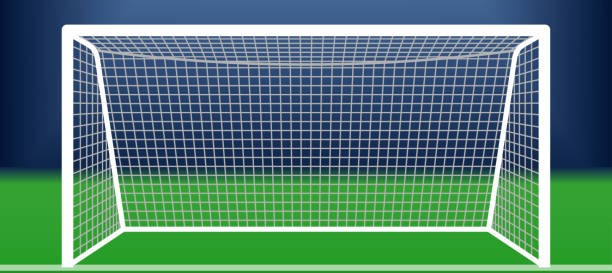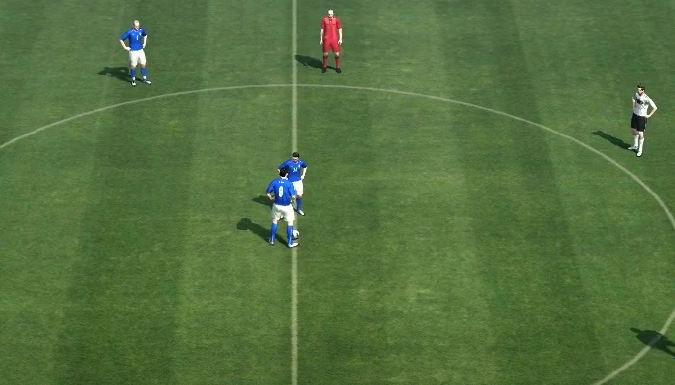













THE REFEREE.

The referee in football is the official responsible for enforcing the rules (Laws of the Game) during a match,
ensuring fairness, safety, and sportsmanship. The referee has full authority to make decisions regarding the game,
including when to stop, start, or resume play, as well as how to handle disciplinary issues like fouls and misconduct.
Main Responsibilities of the Referee:
-
The referee’s primary tasks include:
▫ Enforcing the Laws of the Game: The referee applies the 17 Laws of the Game, covering fouls, penalties, offside, and all other aspects of play.
▫ Controlling the Match: The referee controls the flow of the game, deciding when to stop and restart play, such as for fouls, injuries, or when the ball goes out of play.
▫ Keeping Time: The referee tracks the 90 minutes of regulation time, adds stoppage time for delays (like injuries or substitutions), and oversees extra time or penalty shootouts when necessary.
▫ Disciplining Players: The referee can caution players with yellow cards for minor offenses and send them off with red cards for serious infractions. They also manage free kicks, penalty kicks, and restarts following fouls.
Referee’s Powers and Authority:
-
The referee’s decisions are final regarding all aspects of the game. These include:
▫ Stopping play for injuries, fouls, or other reasons like dangerous weather or disturbances in the stadium.
▫ Awarding free kicks or penalty kicks for fouls and infractions.
▫ Allowing advantage: The referee may allow play to continue after a foul if stopping it would disadvantage the team that was fouled. If no advantage occurs, the referee can stop play after a few seconds.
▫ Restarting play after stops, using the appropriate method (kick-off, throw-in, free kick, etc.).
▫ Consulting with assistant referees or the Video Assistant Referee (VAR) to review decisions such as offside calls or goal incidents.
Assistant Referees (Linesmen):
-
The referee is supported by two assistant referees, who are positioned along the sidelines (touchlines). Their duties include:
▫ Indicating when the ball has left the field and which team gets a throw-in, goal kick, or corner kick.
▫ Signaling offside infractions when a player is caught ahead of the second-last defender at the moment the ball is passed.
▫ Assisting the referee in spotting fouls or misconduct that the main referee may not have seen.
Fourth Official:
-
In higher-level matches, there is also a fourth official:
▫ Manages substitutions and raises the substitution board to display which players are being substituted.
▫ Keeps track of stoppage time and displays it at the end of each half.
▫ Assists the referee by managing the technical areas (team benches) and relaying any issues with team staff or players.
Video Assistant Referee (VAR):
-
In competitions where VAR (Video Assistant Referee) is used, the referee can consult video footage for help with four key match-changing decisions:
▫ Goals: Checking whether a goal was scored fairly, without handball or offside.
▫ Penalty decisions: Reviewing whether a penalty should be awarded or not.
▫ Direct red card incidents: Determining if a player should be sent off for violent conduct, dangerous fouls, etc.
▫ Mistaken identity: Ensuring the correct player is punished for an offense.
*The referee makes the final decision after reviewing the footage and consulting with the VAR team.
Equipment of the Referee:
-
▫ Whistle: Used to start and stop play.
▫ Cards (yellow and red): To caution or send off players.
▫ Notebook: To record fouls, goals, and player information.
▫ Watch: To keep track of time, including stoppage time.
▫ Flags: Assistant referees use flags to signal fouls, offsides, or when the ball goes out of play.
Communication:
-
Referees and assistant referees communicate with each other using:
▫ Hand signals to indicate decisions like fouls, free kicks, or advantages.
▫ Headsets (in many professional matches) to stay in constant communication.
Referee’s Role in Player Safety:
-
▫ Referees are responsible for ensuring that players remain safe throughout the match. They stop play for injuries, prevent dangerous situations, and penalize players for reckless or dangerous challenges.
Referee’s Decision is Final:
-
▫ All decisions made by the referee regarding the facts of play (e.g., goals, fouls, offsides) are final and cannot be changed, even if they appear controversial. Once a decision is made, it stands.
Summary of the Referee’s Role:
-
▫ The referee enforces the rules, manages the game’s flow, and ensures player safety.
▫ Referees can issue yellow and red cards, stop and restart play, and consult assistant referees and VAR.
▫ The referee’s decisions are final and are crucial to maintaining fairness and control in the game.
A good referee helps the game run smoothly by applying the laws with consistency, fairness, and authority.




























